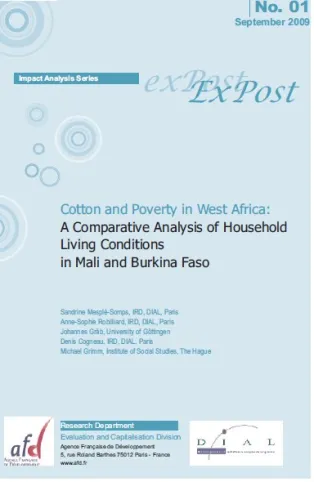Share the page
Cotton and Poverty in West Africa: a Comparative Analysis of Household Living Conditions in Mali and Burkina Faso
Published on

The present study is made up of three sections. The first lays out the terms of the debate on the “Sikasso paradox” as a preamble. The second offers a statistical diagnosis of the standards of living of cotton farmers in Mali and Burkina Faso since the mid-1990s based on the above-mentioned household surveys. Several indicators are used for this: consumption levels, information on households’ assets, adults’ and children’s education levels, children’s nutritional status, and subjective poverty. This allows us to see how cotton farmers in Mali and Burkina Faso are similar and examine how their situation has evolved from the mid-1990s to today. It also allows us to discuss how the choice of statistical measurements effects the standard of living diagnosis. Building on these results, the third section attempts to discuss various economic explanations of four types: (i) the influence of cotton production levels on standard of living; (ii) local public investment gaps between cotton farmers and others; (iii) the producer price of cotton; and (iv) migratory phenomena.
Useful Information
-
Authors
-
Anne-Sophie ROBILLIARD, Denis COGNEAU, Johannes GRÄB, Michael GRIMM, Sandrine MESPLE-SOMPS
-
Edition
-
1
-
Number of pages
-
82
-
ISSN
-
2101-9657
-
Collection
-
ExPost Evaluation
-
Other languages
